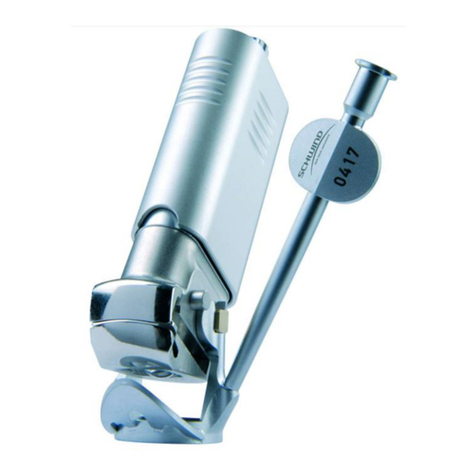
S
SE
ER
RV
VI
IC
CE
E
M
MA
AN
NU
UA
AL
L
3 of
79
___________________________________________________________________________
_______
ESIRIS -- Version 1.0 Date: 22.09.00
INDEX PAGE
1. SECURITY OF DEVICE (LASER BEAM) ...........................................................................................5
GENERAL...................................................................................................................................................5
Alarm Shields and Type Shield............................................................................................................6
Accessible Beam Area.........................................................................................................................7
Protection Glasses...............................................................................................................................7
Working Gas........................................................................................................................................8
Gas containment:.................................................................................................................................8
DECLARATION OF MANUFACTURER (MPG)......................................................................................9
2. DESCRIPTION ..................................................................................................................................10
SPECIFICATION ........................................................................................................................................10
EXCIMER-LASER ......................................................................................................................................12
GAS SUPPLY............................................................................................................................................13
GASCONTAINMENT:..................................................................................................................................13
DELIVERY SYSTEM...................................................................................................................................14
MICROSCOPE AND ILLUMINATION ..............................................................................................................14
CONTROLLING..........................................................................................................................................15
PATIENT BED...........................................................................................................................................15
FOOT SWITCH..........................................................................................................................................15
RINSING OF OPTICAL BEAM DELIVERY SYSTEM .........................................................................................15
3. INSTALLATION REQUIREMENTS AND PREPARATIONS.............................................................17
WORKING ROOM......................................................................................................................................17
DIMENSIONS ESIRIS................................................................................................................................18
INPUT REQUIREMENTS .............................................................................................................................19
INSTALLATION AND ROOM PREPARATIONS FOR THE INSTALLATION...............................................................20
Minimum room dimensions (or room requirements)..........................................................................20
FLOOR REQUIREMENTS ............................................................................................................................20
INSTALLATION REQUIREMENTS .................................................................................................................20
Laser warning lamp ...........................................................................................................................21
Dimensions of boxes for the delivery.................................................................................................21
DELIVERY ................................................................................................................................................22
4. SOFTWARE DESCRIPTION BY SERVICE LOGIN..........................................................................23
MENU EXTRA ...........................................................................................................................................23
Menu Logfile ......................................................................................................................................23
Menu Parameter................................................................................................................................24
Distributor adress...............................................................................................................................25
MENU SERVICE........................................................................................................................................27
Menu Laser:.......................................................................................................................................29
Menu Scanner: ..................................................................................................................................35
Menu digital inputs / outputs..............................................................................................................36
Gascontainment:................................................................................................................................39
MENU ADJUSTMENT:.................................................................................................................................40
Laser:.................................................................................................................................................40
MENU TECHNICAL SECUTITY CHECK (TSC)...............................................................................................44
5. UNPACKING AND CONTROLLING.................................................................................................45
PUTTING INTO OPERATION........................................................................................................................46
WARRANTY..............................................................................................................................................47
6. DISMANTLING OF THE ESIRIS-LASERS .......................................................................................48




























